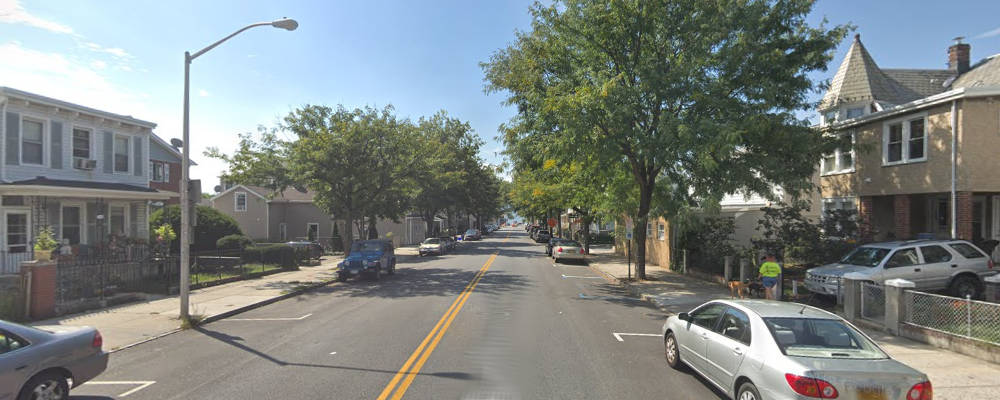
Sleepy Hollow undertook a study to change zoning rules for Downtown. The proposals were presented to the Board of Trustees on April 20, 2021 and May 4, 2021.
Some important tweaks are needed before the draft rules are presented. The Board of Trustees need to hear from you. Below is the email we sent to the Village. Use it and the addresses as a template for your suggestions.
Date: Sun, 9 May 2021 11:28:17 -0400 From: Daniel Convissor <danielc@biketarrytown.org> To: Paula McCarthy <pmccarthy@villageofsleepyhollow.org> Cc: Ken Wray <kwray@sleepyhollowny.org>, Denise Scaglione <dscaglione@sleepyhollowny.org>, Jared Rodriguez <jrodriguez@sleepyhollowny.org>, Rachelle Gebler <rgebler@sleepyhollowny.org>, Sam Gonzalez <sgonzalez@sleepyhollowny.org>, Sandra Spiro <sspiro@sleepyhollowny.org>, Tom Andruss <tandruss@sleepyhollowny.org> Subject: zoning study suggestions
Dear Mayor and Trustees:
The zoning study is proposing several great regulatory improvements for Downtown. Some further enhancements are suggested, below.
1) Residential buildings should be required to provide secure bicycle parking. Two spaces per bedroom. 20% of spaces should be reserved for larger vehicles (e.g. recumbent tricycles used by disabled people, cargo bicycles, etc). The spaces need to either be in a locked room of the building or in an enclosure.
2) Commercial establishments need bike parking as well. Street parking for customers and secure parking for employees.
3) In downtown locations, adding car parking does not solve the "parking problem," it just creates more driving. As Mayor Wray noted, parking requirements make the area ugly. They also make things more expensive for everyone and less desirable for builders. Completely eliminating car parking requirements is the wise choice.
4) The draft plan proposes doubling the parking requirement for medical offices. Downtown residents are the primary customers for our Downtown medical offices and walk to their appointments. Has Sleepy Hollow surveyed patients to see if they are driving to appointments and demonstrated a need for more parking? Again, requiring more parking induces more driving.
5) The zoning study proposes an option for a very small parking requirement reduction for builders who offer public benefits. The reduction listed in the report is far too modest to be a significant incentive. (Each unit would still need 1 parking spot, just lowering the additional spots for each bedroom from 0.5 to 0.25.)
6) Given the damage driving does to Downtown residents, visitors and the planet, reducing parking is a public benefit in itself.
7) The following tools are possible ways to reduce parking demand. They can also be added to the list of public benefit options in the development incentives section:
8) The zoning study proposes incentives for builders in exchange for a builder providing multiple public benefits. In theory, that sounds great; we can get developers to do things for the Village. In practice, though, it misses the big picture:
Given how expensive rents and taxes are, building more housing and broadening the tax base _IS_ the public benefit.
Certainty is crucial for builders. They want clear rules and simple procedures: follow the rules, submit drawings to the Building Department, get approved, build. Quick. Inexpensive.
The incentives package, as proposed, is the opposite of that. During the presentation to the Board of Trustees on May 4th, the consultant explained it would be a "special permit" process, with each applicant needing to go before the Board of Trustees. And it would be is completely discretionary, in which the Board could tell a builder:
"you've met the criteria, but we don't think this is worth everything that's in here, and we think it's appropriate to only allow some of the bonuses and not others." -- https://vimeo.com/545285196#t=36m34s
That means a bunch of meetings, back and forth, redesigns and lawyers. And after all that effort, there's the potential that the proposal still gets rejected. Not only is the process itself costly, the risk involved means banks charge higher interest rates to the builders.
Remind us again, where's the public benefit in all that?
There are several worthy public objectives listed in the incentives proposal. The most important ones should be put in the zoning law and made mandatory for all projects. Again: follow the rules, submit drawings to the Building Department, get approved, build.
Sincerely,
Daniel Convissor
Director
biketarrytown.org | info@biketarrytown.org | B: @biketarrytown.bsky.social | F: @BikeTarrytn